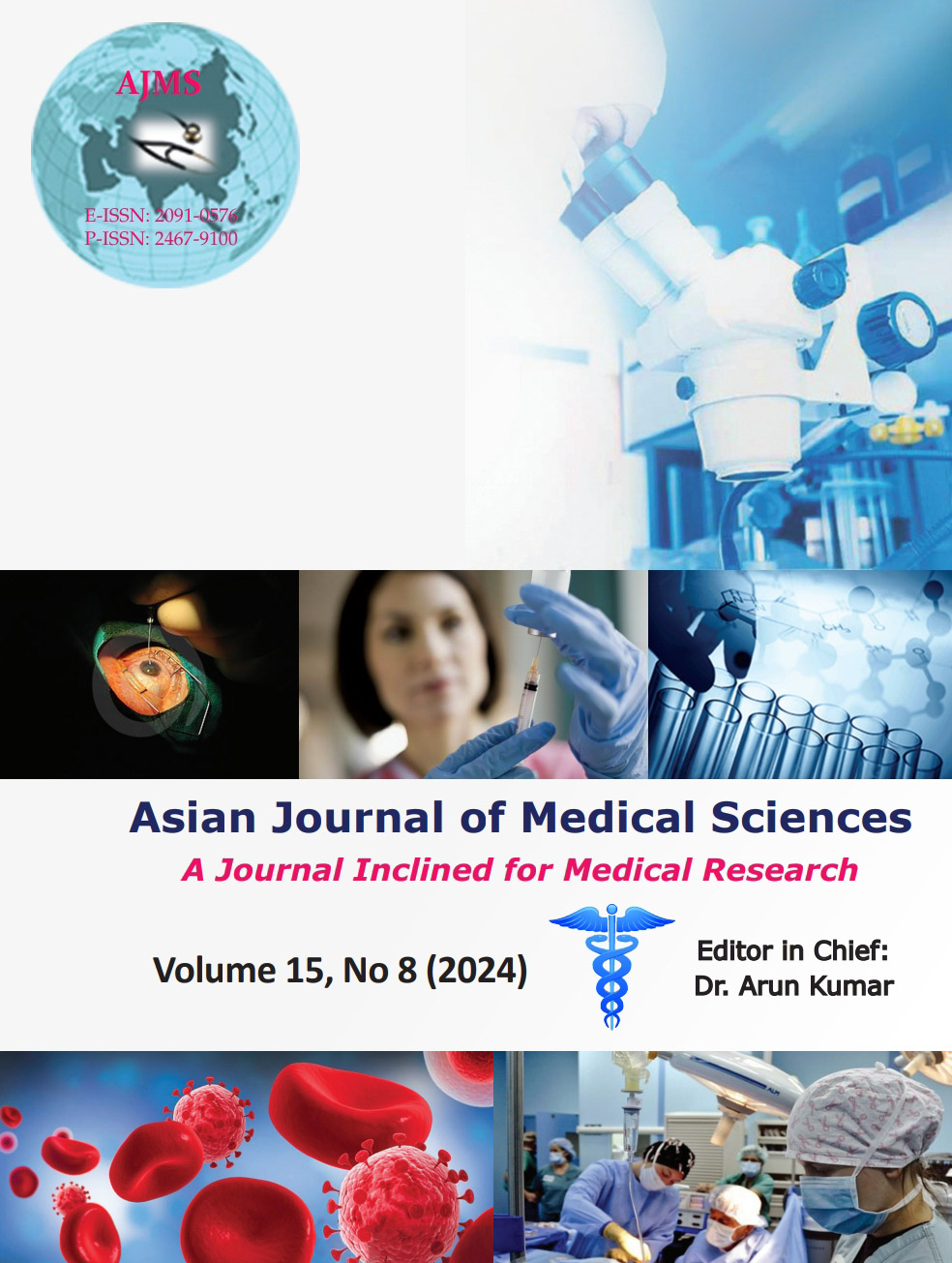A study of non-invasive predictors of esophageal varices in patients with cirrhosis of liver – A cross-sectional study
Keywords:
Esophageal varices; Thrombocytopenia; Hepatic cirrhosis; Gastrointestinal endoscopyAbstract
Background: Current guidelines advise that patients diagnosed with liver cirrhosis undergo screening through upper gastrointestinal endoscopy to detect esophageal varices (EV). Prophylactic measures should be taken for those with large varices on diagnosis and during follow-up. However, this poses a dual challenge, both social and medical, as the number of cirrhotic patients rises while the availability of endoscopy units remains limited.
Aims and Objectives: In this study, we aim to evaluate the diagnostic accuracy of the non-invasive predictors such as spleen size, platelet count (PC), and PC/spleen diameter (PC/SD) ratio for the diagnosis of EV.
Materials and Methods: This hospital-based prospective observational study was done in the SDM College of Medical Sciences and Hospital, Dharwad, among 50 patients with cirrhosis of liver.
Results: Among the 50 patients studied males pre-dominated the study with 80%. Out of the study population, 70% of the patients had varices. For a cutoff point of PC/SD ratio 916, the sensitivity was 71.42% and specificity was 93.3%. For a cutoff value of PC of 1.32 lakhs, the sensitivity was 71.42%, and the specificity was 73.3%. For a cutoff value of the longest SD of 12.40 cm, the sensitivity was 94.30%, and specificity was 33.3%.
Conclusion: These non-invasive predictors can be useful screening tools for the diagnosis of EV. These can be effective for the initiation of prophylactic treatment when the endoscopy facility is not available.
Downloads
Downloads
Published
How to Cite
Issue
Section
License
Copyright (c) 2024 Asian Journal of Medical Sciences

This work is licensed under a Creative Commons Attribution-NonCommercial 4.0 International License.
Authors who publish with this journal agree to the following terms:
- The journal holds copyright and publishes the work under a Creative Commons CC-BY-NC license that permits use, distribution and reprduction in any medium, provided the original work is properly cited and is not used for commercial purposes. The journal should be recognised as the original publisher of this work.
- Authors are able to enter into separate, additional contractual arrangements for the non-exclusive distribution of the journal's published version of the work (e.g., post it to an institutional repository or publish it in a book), with an acknowledgement of its initial publication in this journal.
- Authors are permitted and encouraged to post their work online (e.g., in institutional repositories or on their website) prior to and during the submission process, as it can lead to productive exchanges, as well as earlier and greater citation of published work (See The Effect of Open Access).




